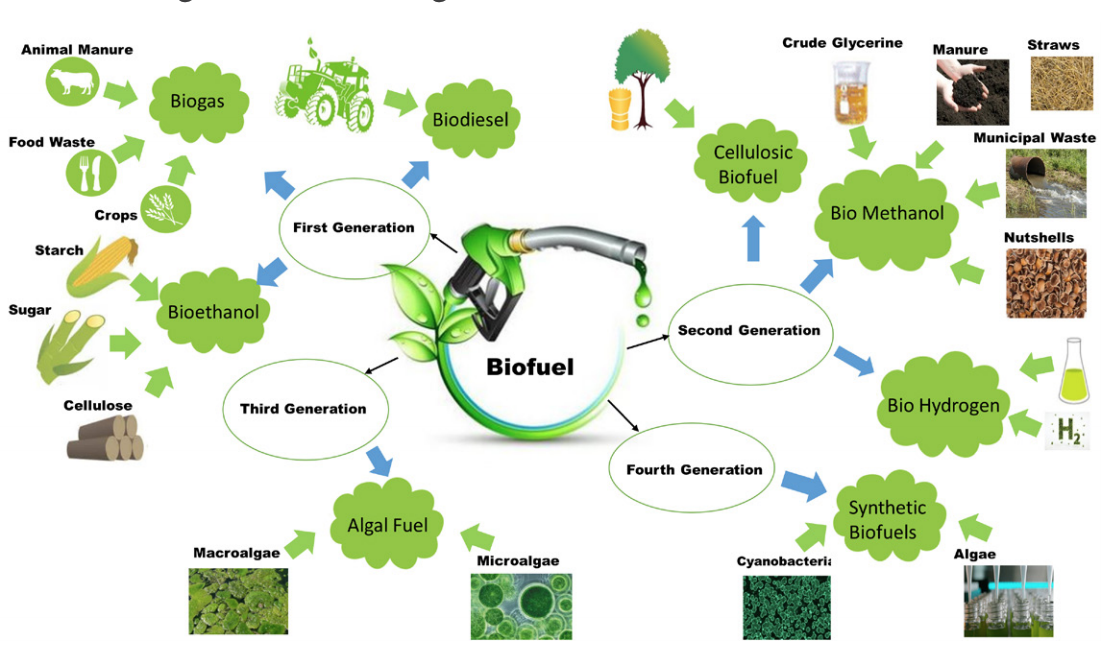Introduction: What is Fourth Generation Biofuel?
The first generation of biofuel was made from wood and other plant materials. The second generation was made from plant oils or vegetable oil. The third generation of biofuel is cellulosic ethanol, which is made from plants that have been grown specifically for fuel production. Fourth-generation biofuel is a type of renewable energy that can be used in the future to replace fossil fuels.
Fourth Generation Biofuel is a type of renewable energy that can be used in the future to replace fossil fuels. It is also called fourth-generation biomass, advanced biofuels, or next-generation biofuels and is not to be confused with fourth-generation nuclear power (which is not yet commercially viable).
Fourth-generation biofuels are the most recent type of biofuel available. They are made from organic material--like wood, animal waste and food waste--rather than food crops like corn. This article describes how they work and which fuels may be considered fourth-generation biofuels.
Why should you choose to invest in an alternative engine for your vehicle?
In this article, we'll be exploring the many benefits of investing in an alternative engine for your vehicle. These include significant savings on fuel costs and a reduction in emissions that would be harmful to the environment.
There are a number of reasons why you might want to consider investing in an alternative engine for your vehicle. These include:
- Improved fuel efficiency
- Reduced emissions
- Lower cost of ownership
- Less maintenance
The Biggest Benefits of Fourth-Generation Biofuel
Biofuels are a clean and sustainable source of fuel that is not only renewable but can be used to power vehicles and generate electricity. They are becoming a more popular choice since they emit fewer fumes than fossil fuels, help reduce carbon emissions, and offer an affordable way for people to reduce their dependency on fossil fuels.
The benefits of fourth-generation biofuel are many, some of which include:
- Reduction in greenhouse gas emissions by up to 60%
- Reduction in air pollution by up to 90%
- Increased availability of food for human consumption
Which Countries Have the Cleanest Air & How They Got There?
The air quality in some countries is so bad that it can cause cancer and other diseases. The World Health Organization (WHO) has a list of the cleanest countries with the best air quality.
The WHO has released a list of the cleanest countries with the best air quality. These are Finland, Iceland, New Zealand, Sweden, Austria, Switzerland, Norway, and Canada.
One thing these countries have in common is that they have public policies to cut pollution from vehicles and energy production.
In addition to these policies, they also have strong regulations on fuel standards for vehicles and energy production as well as low levels of coal-burning power plants which emit sulfur dioxide and nitrogen oxides which produce acid rain.
In addition to strong regulations and public policies, some of these countries also rely heavily on renewable energy sources such as hydroelectric, wind, and solar power. These sources of energy produce far fewer emissions than traditional fossil fuels, further contributing to their clean air rankings.
Another factor that has contributed to the success of these countries in achieving clean air is their investment in public transportation and active transportation infrastructure. By making it easier for people to travel without using personal vehicles, they have reduced the number of cars on the road and consequently reduced emissions.
Despite these successes, there is still much work to be done in improving air quality around the world. As more countries recognize the importance of clean air and take steps to address pollution, there is hope that air quality will continue to improve globally.



0 comments:
Post a Comment